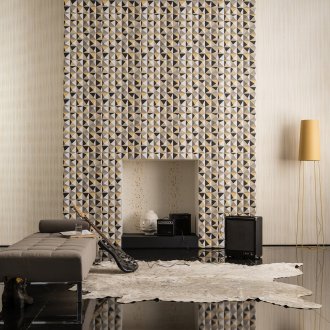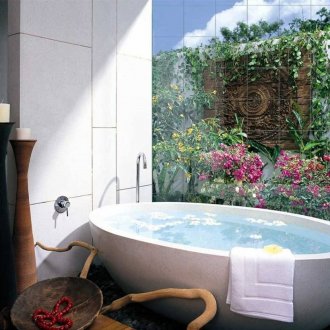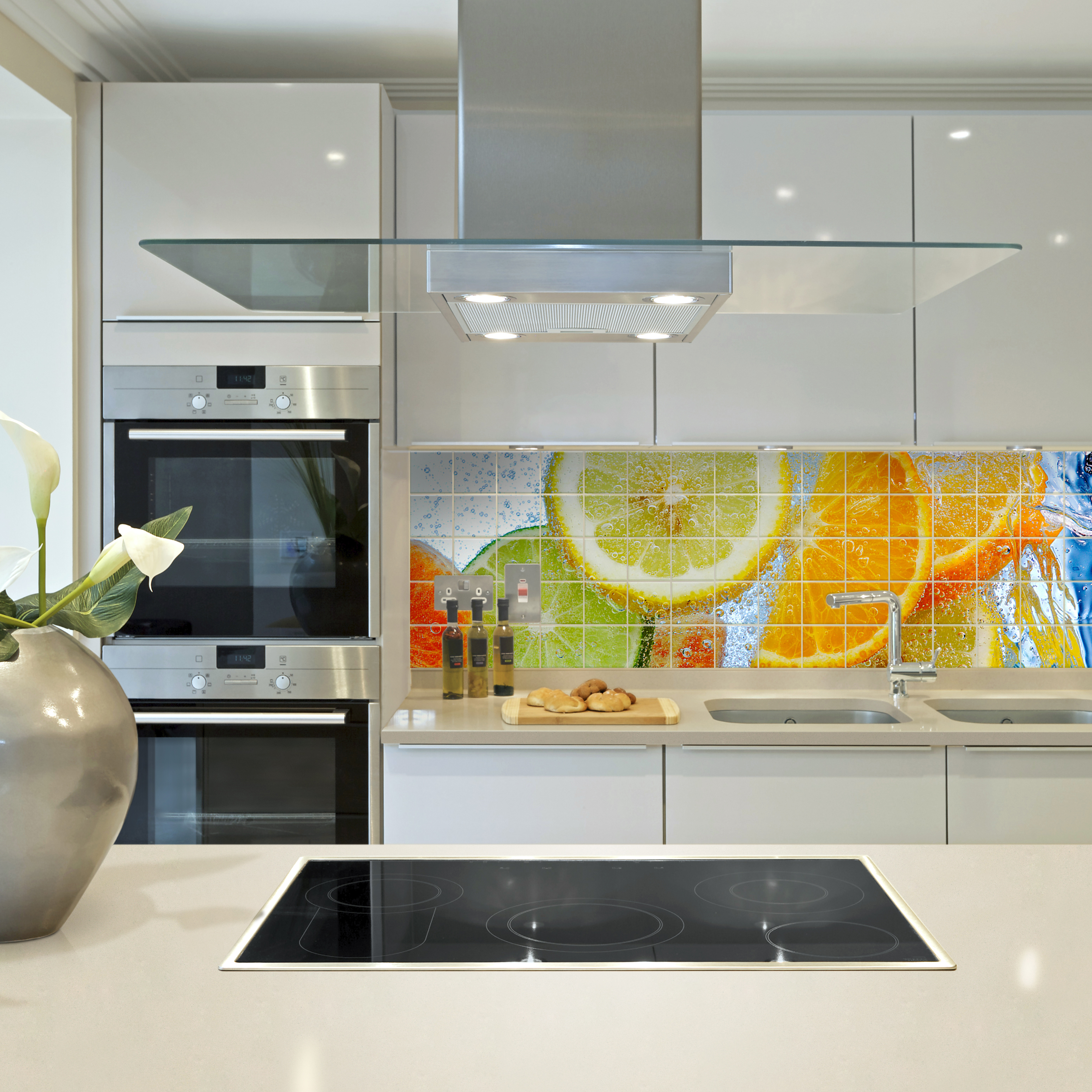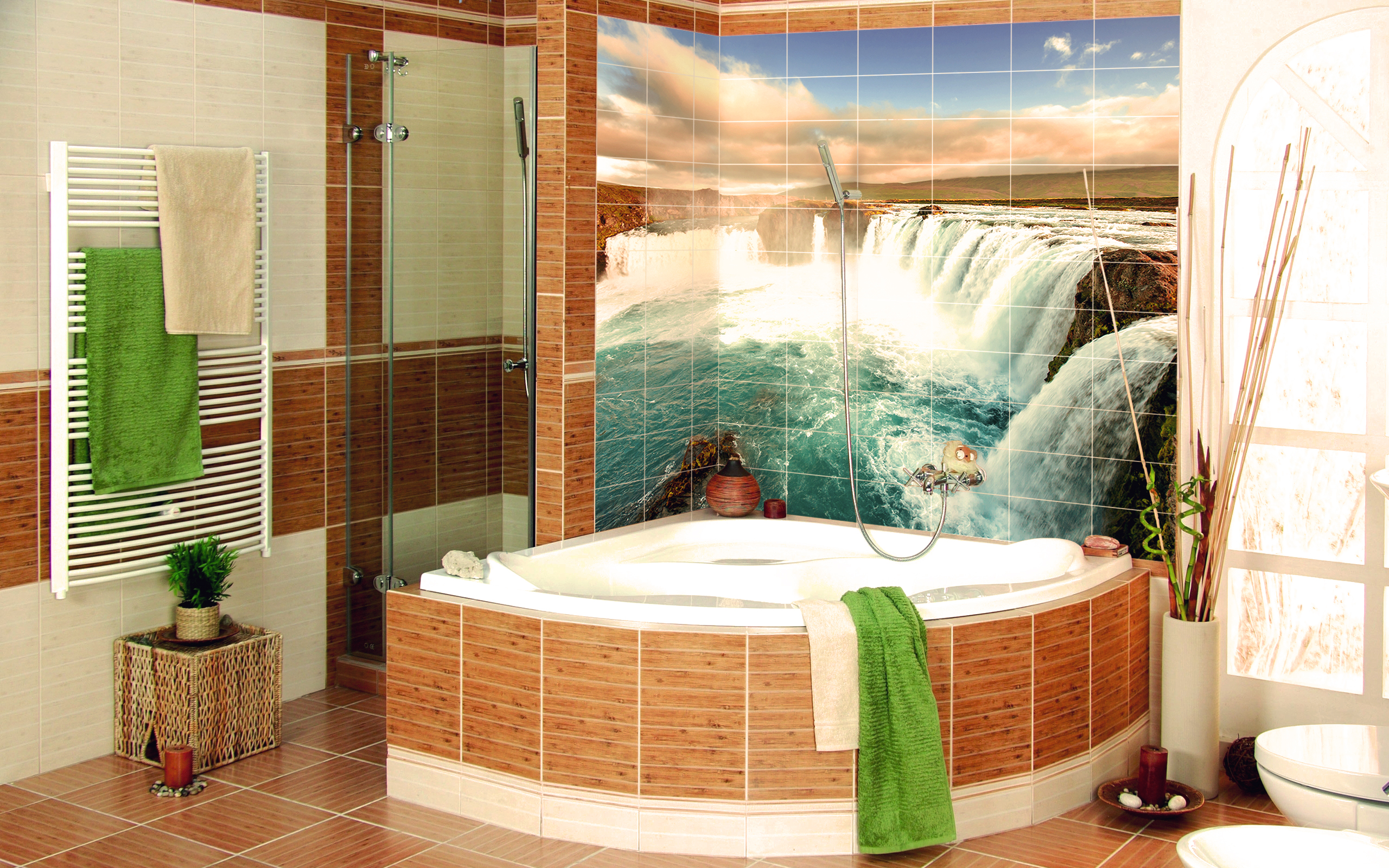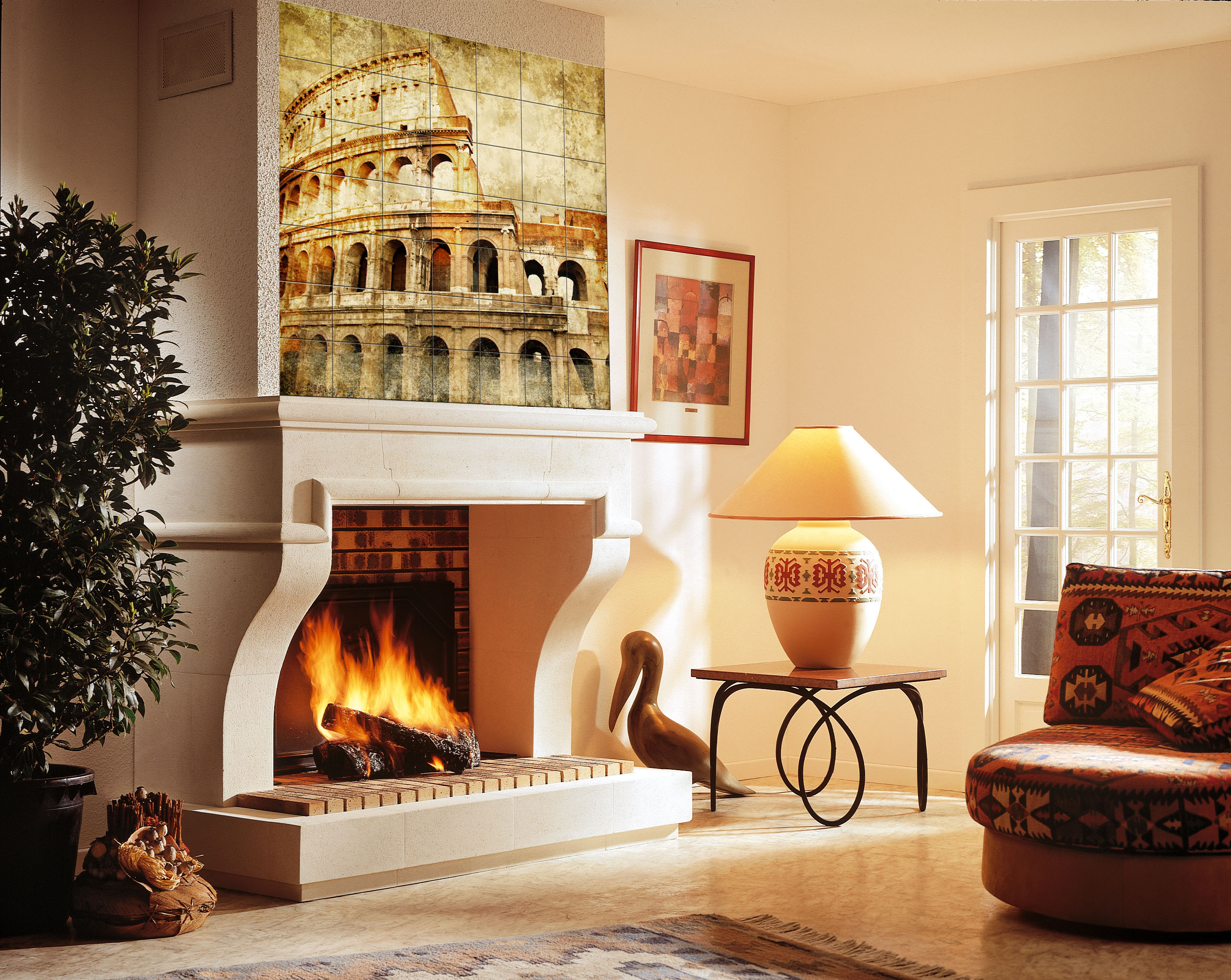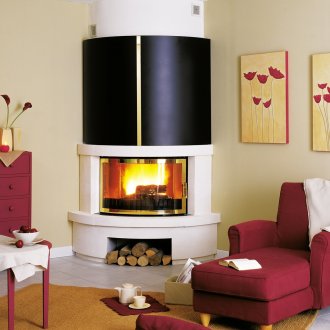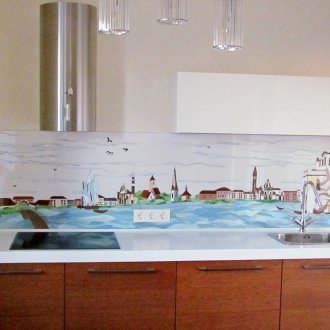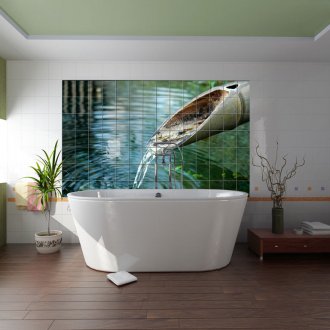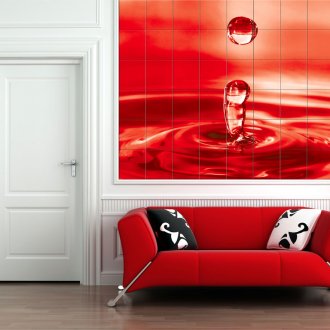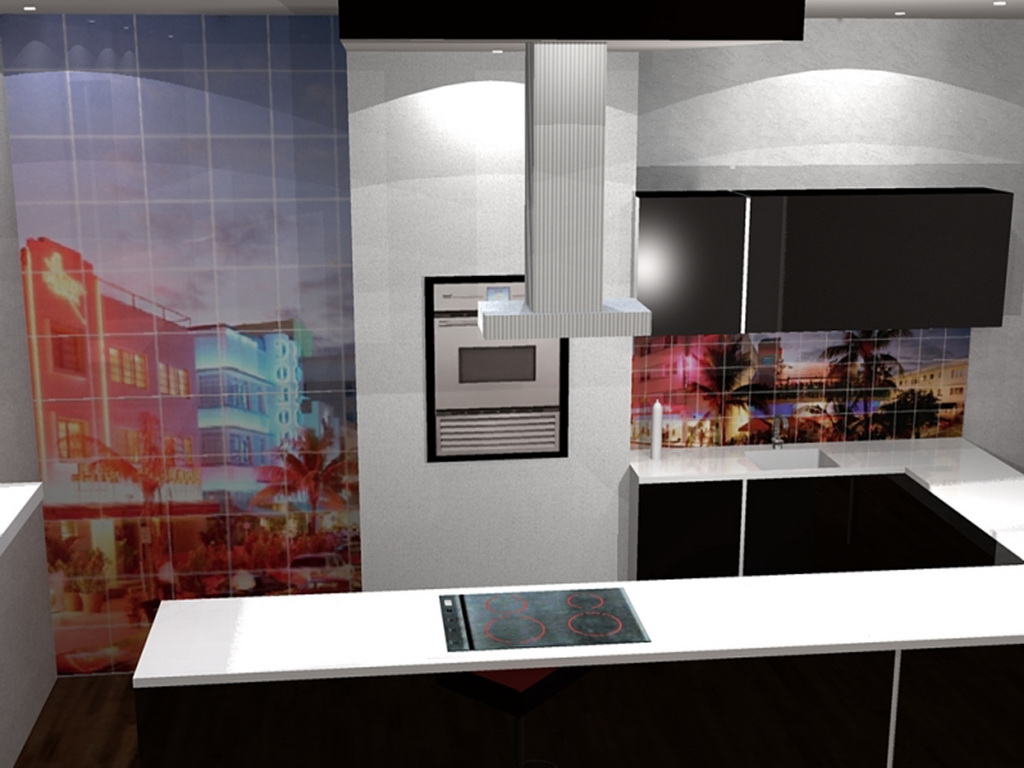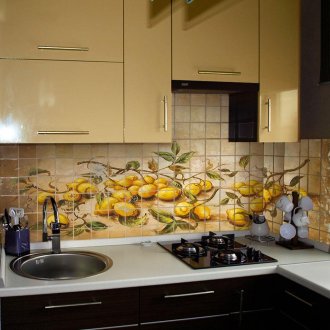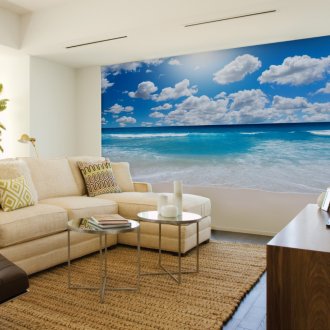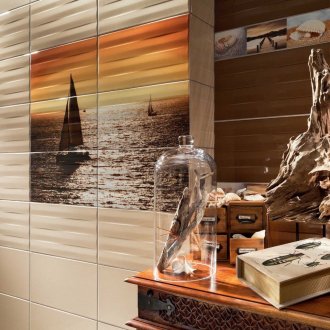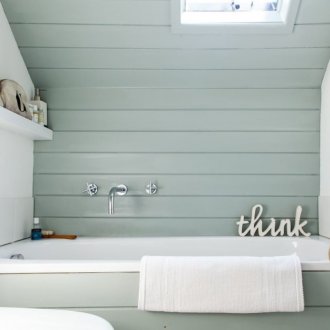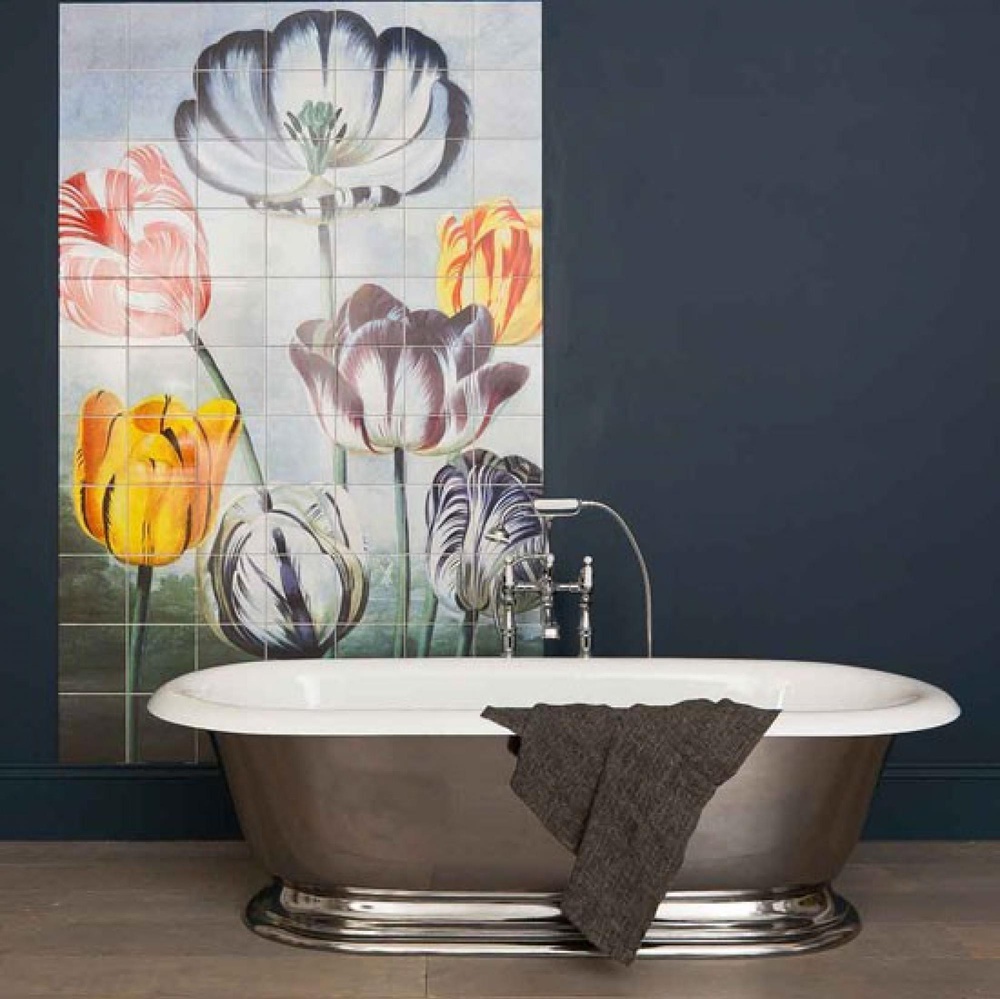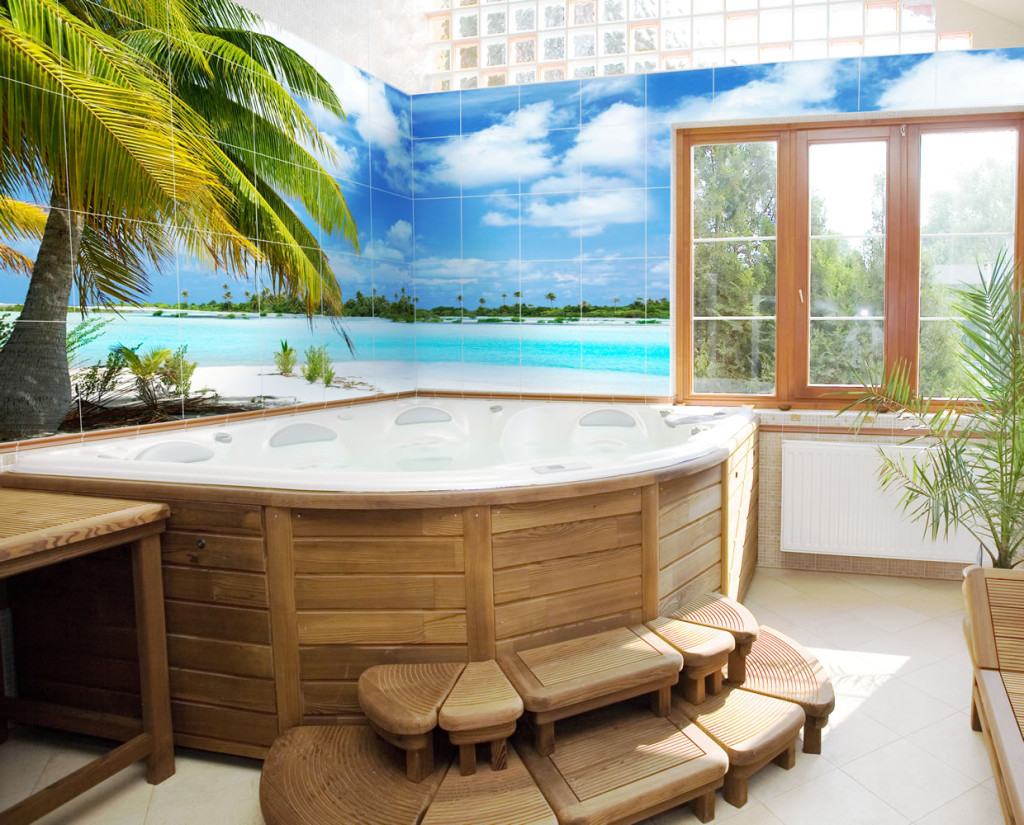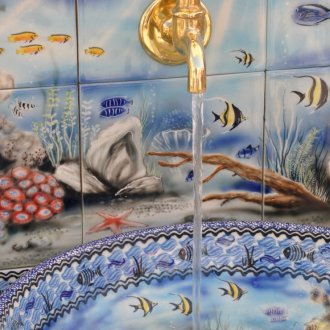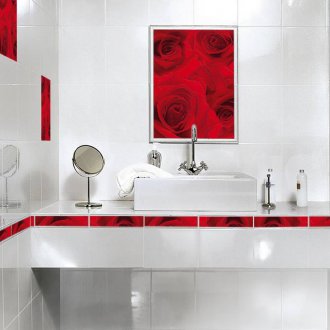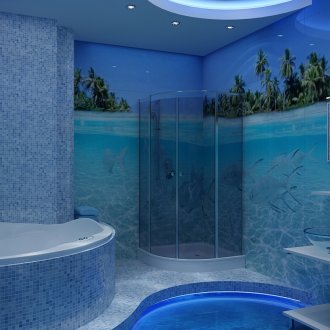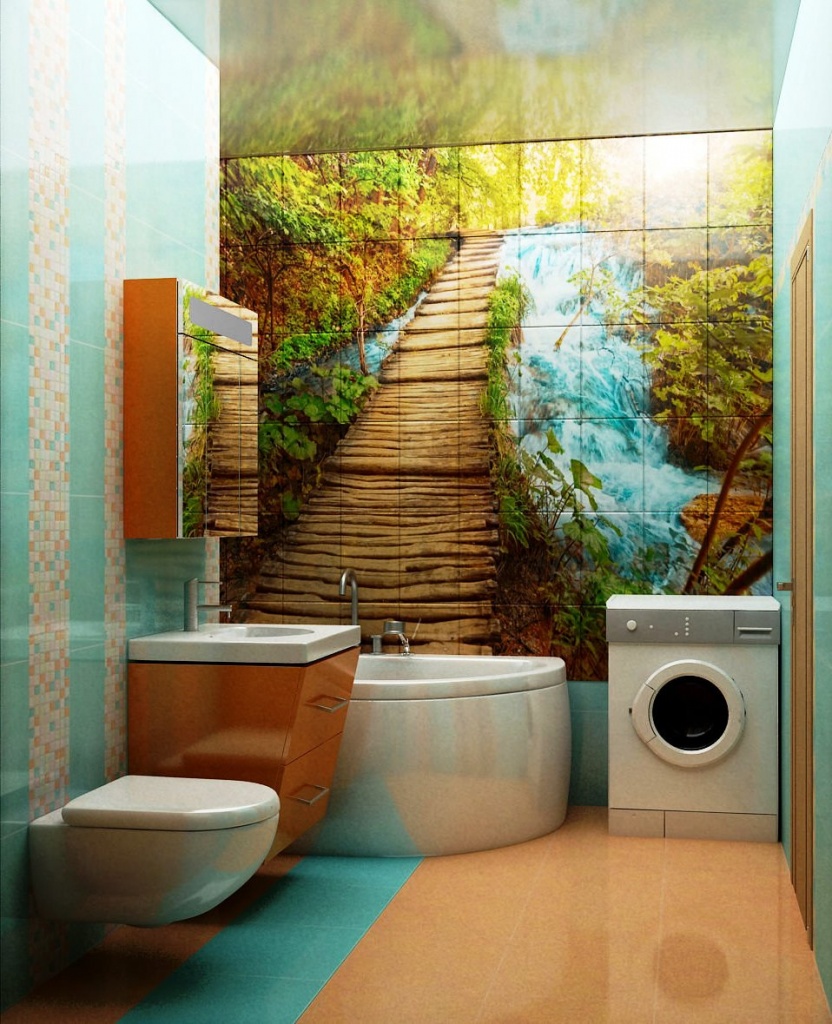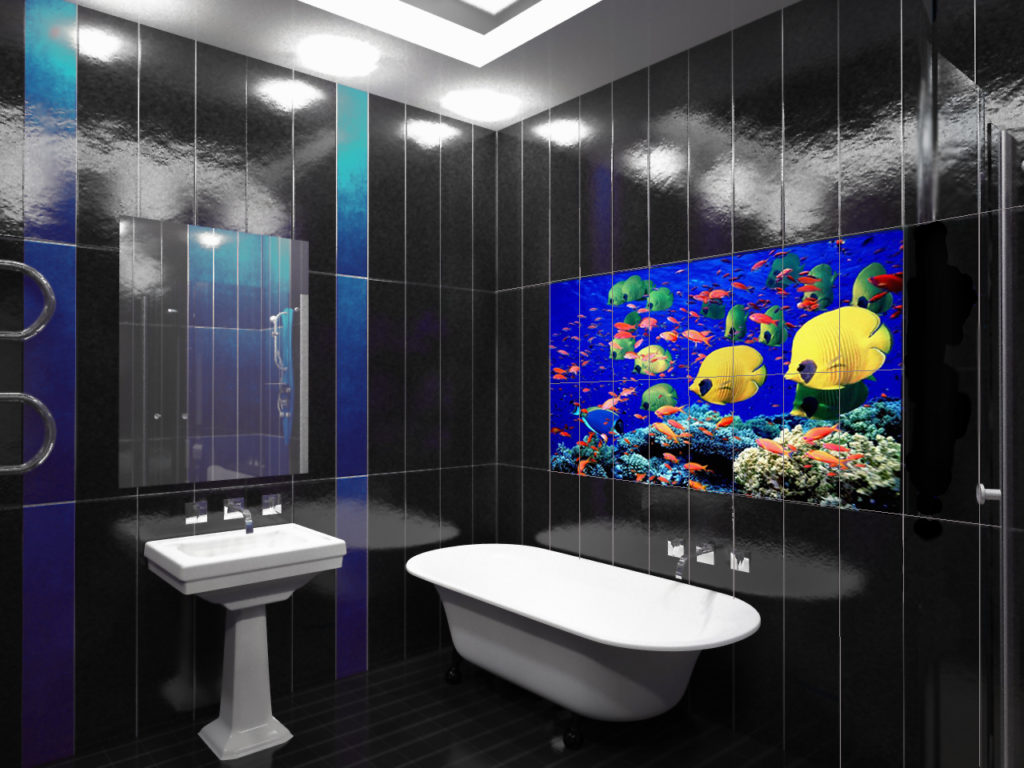Modern photo tile: individuality in every moment (23 photos)
Content
The clarity of the images on the photographic tile allows it to be used in many design options for living rooms, halls, for the design of office premises, catering establishments, swimming pools, various salons, shops and medical institutions. Modern photo printing on tiles can visually increase the volume of a room or create a complete illusion of a view from a window in place of a blank wall.
Methods for drawing a pattern on ceramic tiles
The tile, which is used as the basis for 3D paintings or drawings can be of any size and shape, even mosaic is suitable. To create separate photographic tiles or wall panels, various technologies for applying images to a ceramic surface are used.
Sublimated Printing
This is a relatively simple and inexpensive way to create ceramic art panels. On a special printer, the desired pattern or photo is printed with sublimated inks, which are obtained on paper in mirror image. Then the tile with the paper attached to it is placed under a special press and the temperature is raised to 180 ° C. After three minutes, the image transfer process is completed, the tile is immersed in cold water, and then covered with transparent glaze. Thus, the image is fixed.
In the future, such a photographic tile will not be subject to mechanical stress, wet cleaning can be applied to it, with the exception of abrasive cleaners. The ceramics used for the panel must be very strong and meet all the requirements of this process.
Tile UV Printing
Inkjet printing with special UV inks, which photopolymerize under the influence of ultraviolet rays and form a resistant film on ceramics, allows you to apply any image to the surface. The high resolution of the original image allows you to seal any size area without loss of quality. Ceramic photographic tiles obtained in this way are most often used to decorate wall surfaces in the bathroom.
UV printing technology allows you to most fully transmit both saturated colors and their various shades. This is facilitated by fixing the layer of paint on the tile. In order to avoid distortion in color reproduction, white ink is preliminarily applied to a bright or very dark tile. Thus, the old image is deleted and a new one is applied.
Decal
This technology transfers images from paper to ceramic or glass. The image on a paper base is applied by silk screen printing, offset printing. The use of a decal laminator for photoceramics greatly simplified the entire production process and eliminated the use of decolor. Work can be carried out in a normal office building and does not require the organization of a special room or workshop.
In the production of photographic tiles, the hot decal, thermal decal or underglaze firing method is used. The temperature of processing products 800-850 ° C. Paints under the influence of such temperature penetrate under the glaze of ceramics, which reliably protects the resulting image.
Such a photo tile for the kitchen will last a long time, will not fade in the sun and will not change its appearance from the stove next to it.She has a beautiful glass luster, it is inert with respect to aggressive chemicals. Thanks to these properties, it is ideal for an apron and enliven the space of the working area.
Photo printing on ceramic tiles made by hot decal has a higher cost than other similar products, and is considered to be elite. Such a photo tile for a bathroom or a panel will decorate any wall, they can be safely installed on any surface in the kitchen and in other rooms. They will not only protect the walls or floors from moisture, but also will not allow the spread of harmful microorganisms and fungi.
Ceramic tile firing
It is one of the most reliable methods of obtaining a pattern on a ceramic surface using special ink and powder. Glaze is applied to the tile, and the image is baked at a temperature of more than 800 ° C. The strength of the obtained relief surface is very high, in addition, the tile has increased resistance to various external influences.
Direct Tile Printing
With the help of special printers, it has recently become possible to create separate photographic tiles and whole panels by printing the image directly on the surface of the tile. Precoatcoat varnish is preliminarily applied to the cleaned tile surface. The printing process lasts about 4 minutes. In this case, firing of the obtained product is not required; the tile is placed in a special drying cabinet.
This technology is based on the formation of a strong polymer layer and further heating at a temperature of 150 ° C. The resulting photographic tile is resistant to mechanical stress and, for many years of operation, retains color brightness.
Glass tile
Images on glass photographic tiles, in contrast to tile and ceramic, have a peculiar perspective, depth. This is due to the fact that paints are applied to the back of the product and the glass layer refracts and reflects light.
This is one of the latest achievements in design art, the beauty and aesthetics of which meet the requirements of most consumers. The main advantages of this coating:
- glass tiles and printed panels are not affected by temperature changes, image quality does not deteriorate;
- lack of moisture under glass, inaccessibility to chemical components included in detergents, ensure long-term use of the coating;
- images are not directly exposed to ultraviolet radiation; their color does not fade;
- easy to mount on any flat surface using ordinary glue for tiles and grout;
- a panel consisting of individual glass elements is easy to transport;
- the glass tile is ideal for an apron in the kitchen, as the glass is easy to wash, drops of fat do not absorb and do not spoil the surface.
The size of glass photographic tiles can be different; panels made of tempered glass will become a real highlight in the design of the premises. Finishing a floor bathtub with such building material will give the room an elegant look, will suit any style of interior and will not bring additional difficulties in cleaning. Mosaic panels of small glass elements that can be installed on the walls or ceiling of the living room, in the dining room or in the kitchen will give the room an expensive fashionable look.
For a fairly short time, various types of photographic tiles have become one of the most popular finishing materials for decorating rooms in private houses, apartments, as well as walls and ceilings of various cafes, bars and salons. Technologies for creating such products continue to improve, and designers are finding new uses for such an interesting finishing material.
